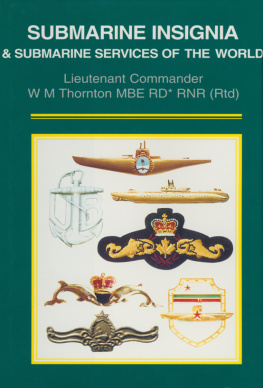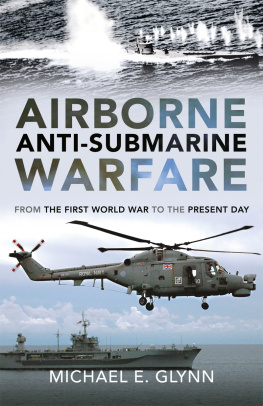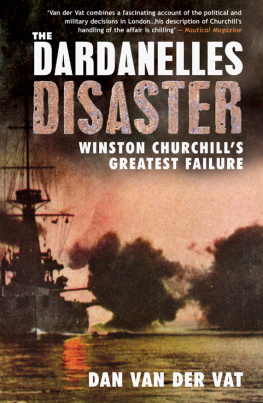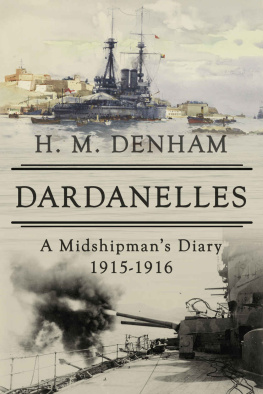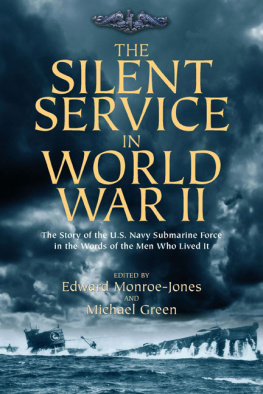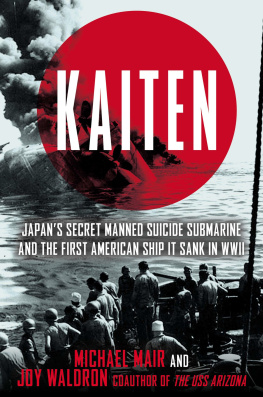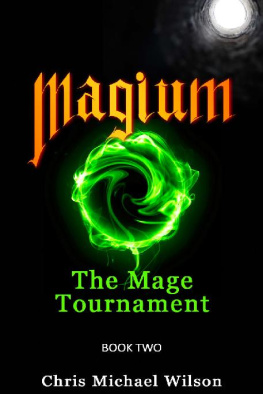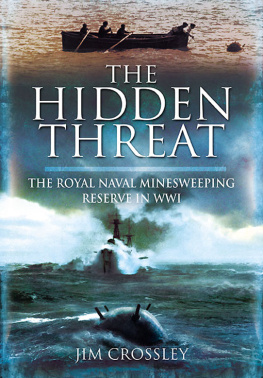First published 1988 by Leo Cooper Ltd
Leo Cooper is an independent imprint of
the Heinemann Group of Publishers,
10 Upper Grosvenor Street, London W1X 9PA.
LONDON MELBOURNE JOHANNESBURG AUCKLAND
Copyright Michael Wilson 1988
ISBN: 0-85052-8852
Printed and bound in Great Britain by
Mackays of Chatham
The Naval History of Britain contains no page more wonderful than that which describes the prowess of her submarines at the Dardanelles. Their exploits constitute the finest example of submarine warfare in the whole of the Great War.
Winston S Churchill.
Contents
Illustrations
MAPS
Drawn by Patrick Leeson
TABLES
II Characteristics of Submarines Operating in
or around the Dardanelles
ACKNOWLEDGEMENTS
The author and publishers would like to thank the following for permission to reproduce copyright photographs: The Submarine Museum, Nos 1, 4, 5, 6, 8, 11, 16, 17, 18, 20 and 22; Mr B. Head, No 2; The Countess of Elgin, No 3; Mr D. Hallifax and the Imperial War Museum, Nos 7, 9 and 19; Mr Rene Gregor, Nos 12 and 13; Mr Peter Haywood, Nos 14 and 15; the Fleet Air Arm Museum, No 10; the Imperial War Museum, No 21.
Preface
THE KEEPING OF DIARIES by members of the armed forces in time of war is forbidden, a ruling which is, I suspect, common to other countries as well as Britain. Yet, after a war these diaries surface by the score to form the basis of the memoirs of the famous and the not so famous. Others gather dust in attics while waiting for an interested son or grandson to rediscover them. But where would historians be without them? They provide a factual account of the events of the time as seen by the author undisturbed by hindsight. Being essentially private they tend to be uninhibited, while omissions are those of lack of knowledge rather than in answer to any call for a cover-up. On the other hand it must not be forgotten that the picture they paint is that seen by the writer who may not be privy to the wider scene of strategy and tactics, or even events in a neighbouring ship or batallion.
This is the story of one young naval officers war for thirteen months from its outbreak in August, 1914. Since he was serving in the submarine HMS E7 it is essentially the story of that submarine. For eight months they faced the boredom, dangers and winter weather of the Heligoland Bight at a time when the operation of submarines in war was new and tactics were discovered and developed by experience. It was a time when the British Grand Fleet and German High Seas Fleet sought to find the others weakness which could lead to an outright victory on the scale of Trafalgar.
Lieutenant Oswald Hallifax and the E7 then found themselves sent to the Mediterranean to support the ill-fated Gallipoli campaign, destined to force the Dardanelles and operate in the Sea of Marmara. There they and the other British and French submarines were instructed to interrupt the flow of Turkish sea-borne supplies to the front, a submarine success story which has become one of the classics of submarine warfare.
Above all it is the story of submariners fighting a war with a new weapon which few recognized for its potential or perceived its way of operating.
This story would not have been possible without the diaries of Lieutenant Oswald Hallifax. I am indebted to his son, the late Mr Derek Hallifax, for his kind permission to quote extensively from these diaries, the originals of which are kept by the Imperial War Museum, with copies at the RN Submarine Museum at Gosport. I am also grateful to Dereks widow, Mrs Jean Hallifax, his sister Mrs C. Samuel, and his nephew Mr J. Westwood for their subsequent support.
I also wish to thank Mr Douglas Cochrane and his wife for their hospitality and the time taken to talk to me about his father, the late Captain Sir Archibald Cochrane; also the Dowager Countess of Elgin, Captain Cochranes sister.
Mr Gus Britton of the staff of the RN Submarine Museum has always been a great help and encouragement. His expertise is thankfully acknowledged. I also wish to thank Commander Richard Compton-Hall, the Director of the Museum, for allowing me to use the Museum facilities and for permission to use some of the Museums many photographs.
My thanks also to Mrs Ursula Betts for permission to use the verses from the poem Hang On written by her father, Commander J. G. Bower, which are quoted in ; to Mrs B. Favell for permission to quote from the diary of her father, Commander (later Vice-Admiral Sir) Cecil Talbot; this diary too is now held by the Imperial War Museum; to Century Hutchinson Ltd for the use made of material originally published by them in 1928 in The Uncensored Dardanelles by E. Ashmead-Bartlett; to the Controller of Her Majestys Stationery Office for the use of Crown Copywright material in the Public Record Office; and to Rear Admiral J. R. Hill for permission to quote from the Naval Review. I am most grateful to those who have loaned me photographs and given permission for their use.
Others who have aided my research and whose help is gratefully acknowledged include Mr Rod Suddaby of the Imperial War Museum; Mr Brian Head who has given so much assistance particularly as a result of his own work on the story of HMS E31 and Lieutenant Commander Feilmann; Mr Tony Vine of the Royal Australian Navy; Mr Graham Mottram of the Fleet Air Arm Museum; Mr Seb Cox of the Air Historical Branch of the Ministry of Defence; Mr Alexander Cochrane whose book The Fighting Cochranes provided so many leads; Lieutenant-Commander Arnold Hague RNR, Mr David Lees and Mr Tom Adams of the World Ship Society; and finally, but by no means least, Mr Alan Francis of the Naval Historical Library in the Ministry of Defence whose willing help solved so many problems.
SINCE THE MIDDLE AGES many inventors in Europe, and later in America, had experimented with submersibles, that is ships which could travel under the sea as well as on the surface. Indeed it was mans greatest desire either to be able to fly like the birds or to be able to travel in the sea like the fishes. But the true development of the submarine needed the impetus of two other technological advances: a satisfactory engine to propel the boat underwater, and a weapon that would justify the use of a submarine against an enemy but which would give the submarine itself a chance to survive the attack. Both these advances came in the closing years of the nineteenth century with the successful development Whitehead self-propelled torpedo in 1868 and the installation of an electric motor in a submarine by a Spanish naval officer in 1886.
By the end of the century the French were establishing themselves as the leading submarine power. The fact that such a force was just across the Channel from the main naval base at Portsmouth was not lost on the Admiralty for, despite the improving political relations that were to lead within a few years to the Entente Cordiale, there remained a traditional suspicion of the French surviving from centuries of warfare. It was this suspicion that finally led the Admiralty to look seriously at the requirement for submarine development in the Royal Navy.




